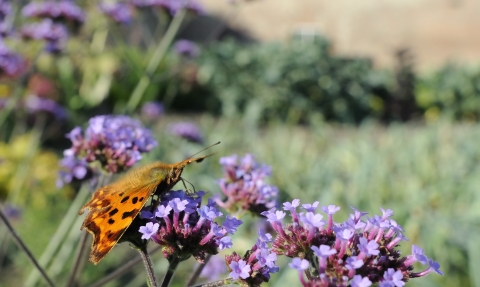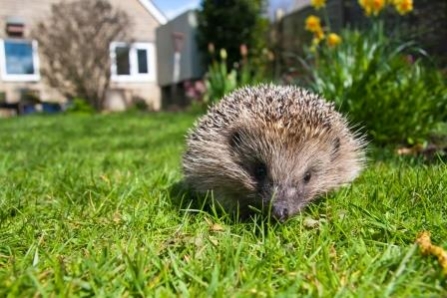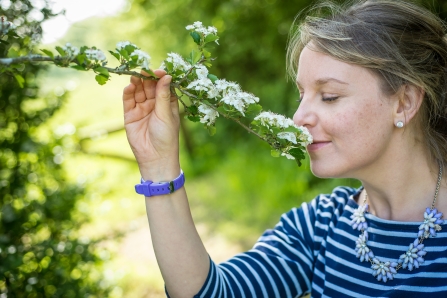
Comma. Photo, Nick Upton/2020VISION
In your garden
Gardens are a great place to see wildlife up close
They're also vital for wildlife. Just consider these facts and figures…
- The UK’s gardens cover a combined area larger than all its nature reserves
- The UK’s gardens are home to 29 million trees – that’s 25% of all trees outside woodlands
- Some wildlife – including thrushes, hedgehogs and frogs - are now much more common in gardens than in the wider countryside
- A 30 year study of just one garden discovered it contained more than 1,600 insect species
Be different and stay connected
The amount of wildlife you see in your garden will depend on two things:
1) Variety – the number of different ‘habitats’ you are offering. Basically it’s a case of the more the better. There’s lots you can offer, for example long grass, ponds, hedges, mature trees, compost heaps, a boggy area, flower borders and log piles. We’ve got much more advice on wildlife gardening here.
2) Connectivity – is you garden an island of green in a sea of tarmac drives, concrete patios and high fences? Or is your garden linked to other great wild gardens, or perhaps even fields or woodland?
Our gardens across cities and towns provide a rich green network for pollinators and wildlife. It's easy to make your garden more wildlife friendly!DWT

Hedgehog. Photo, David Kilbey
So what can you expect to see?
- Two top predators who will regularly hunt in gardens are foxes and sparrowhawks.
- Hedgehogs are still a common sight in many Devon gardens. While grey squirrels provide garden acrobatics – even if they are not always universally welcomed!
- Well-stocked bird feeders should mean a long list of visitors. Most gardens will see regular appearances from robins, blue and great tits, blackbirds and goldfinches.
- But look out for rarer visitors too. Redwings, fieldfares, bullfinches, marsh tits and pied flycatchers all use gardens.

Photo, Matthew Roberts
Your garden pond will support a wealth of life beneath and above its surface. It will be a magnet to frogs, newts, dragonflies and even grass snakes.
Most gardens will be visited by a range of beautiful butterflies which will include speckled woods, red admirals, holly blues, painted ladies and brimstones.
At night time your butterflies will give way to a longer list of moths. Also be on nocturnal lookout for bats, and listen out for the territorial calls of local tawny owls.
Feed the birds
Make sure your garden’s wildlife become loyal visitors by feeding them regularly, and by providing fresh water and a range of nest homes. To help you get started we’ve been working with Vine House Farm to bring you all the best in making gardens good for wildlife. Take a look at what they offer.
Our friends at Vine House Farm help us in our work for wildlife by donating 5% of their annual takings to the Wildlife Trusts. So you can help support us by buying from Vine House Farm!
Live in Exeter?
Do you have or want a garden crawling in wildlife? We want to invite you to enter our Wildlife Gardening Award and help wildlife thrive in our city. The award is open to residents, schools and businesses! Find out how to enter our Exeter Wildlife Garden Award.
Find out more about a species you've seen
Become a member and support our work
The vital work we do for nature depends on the support of people who care about the future of Devon’s wildlife and wild places.
